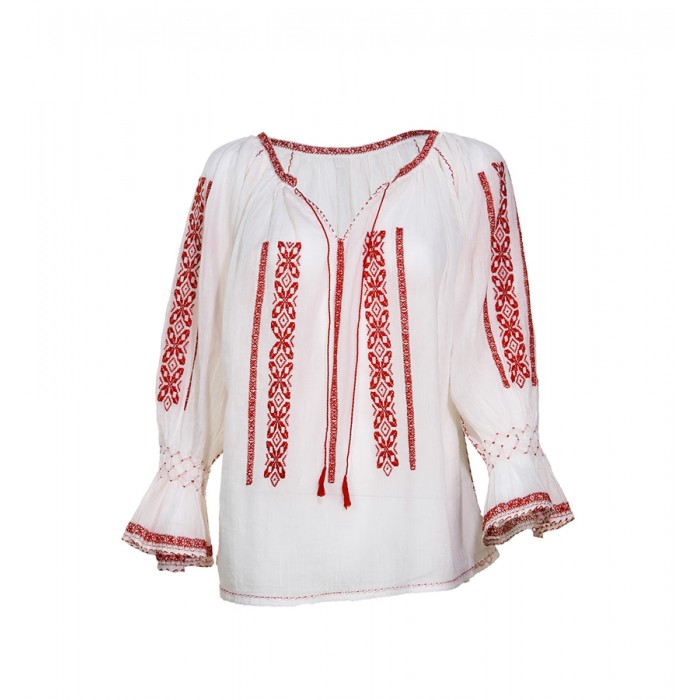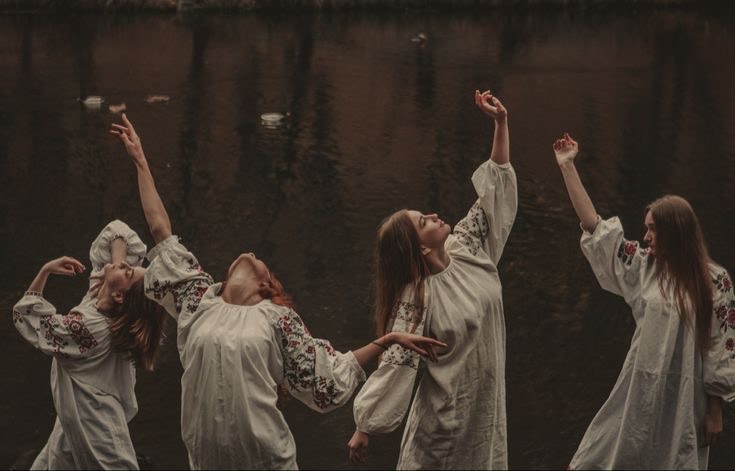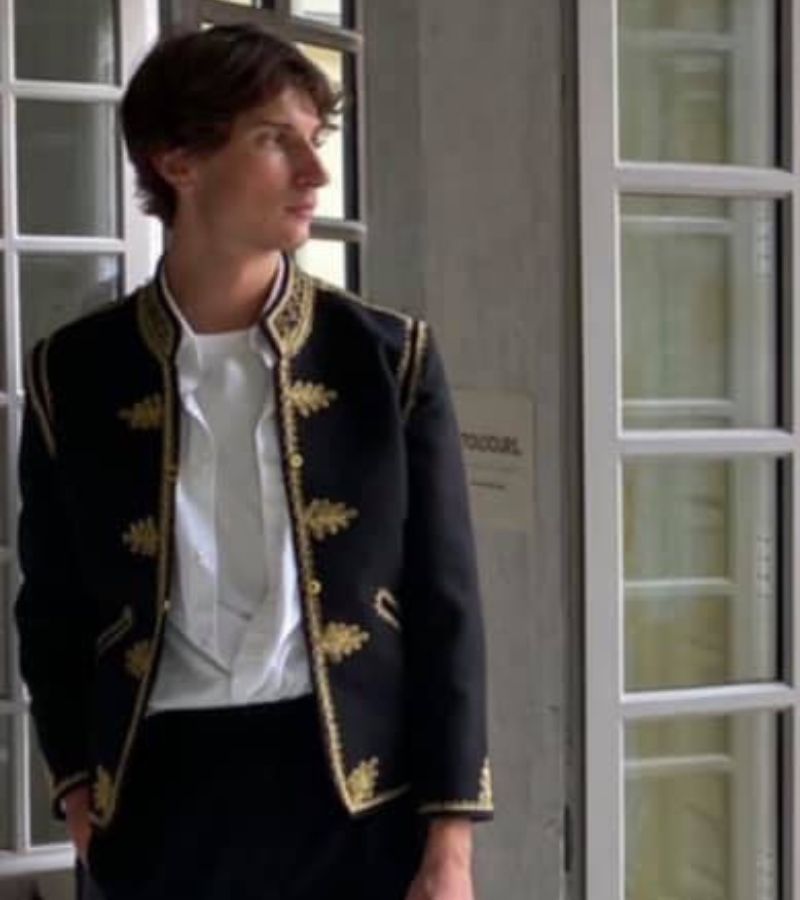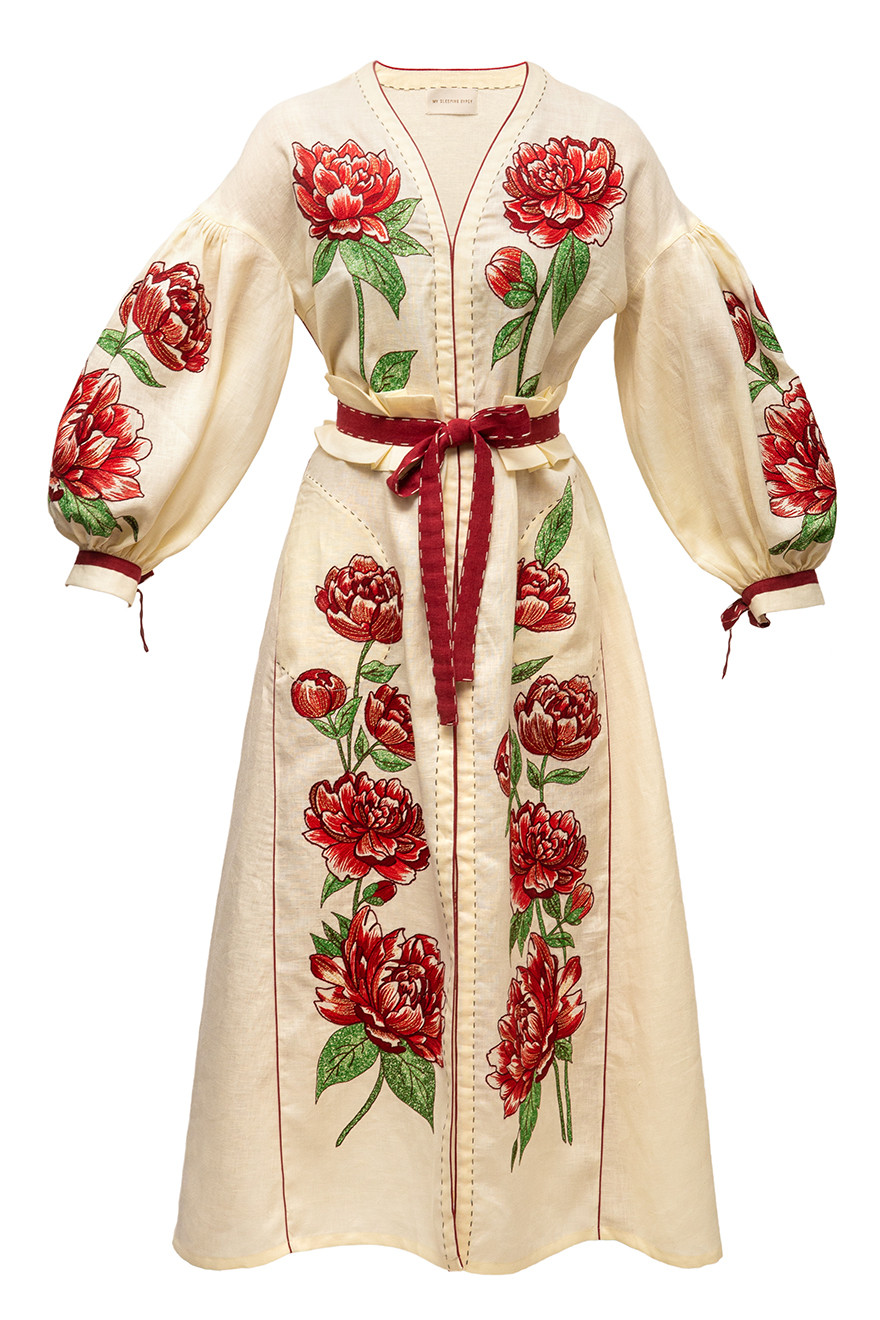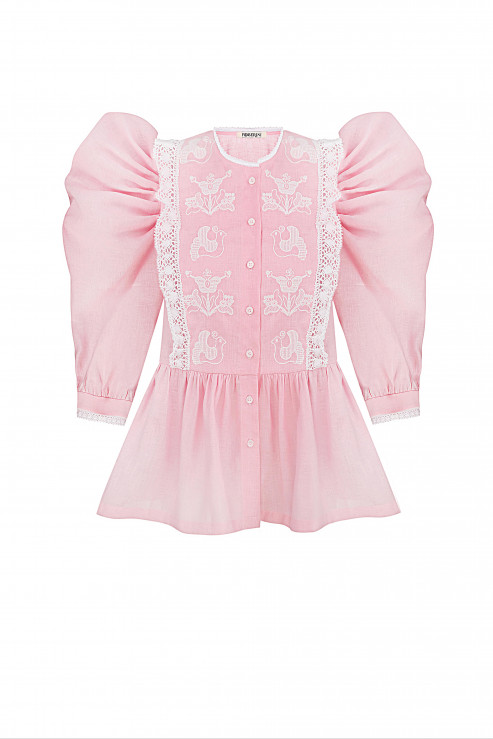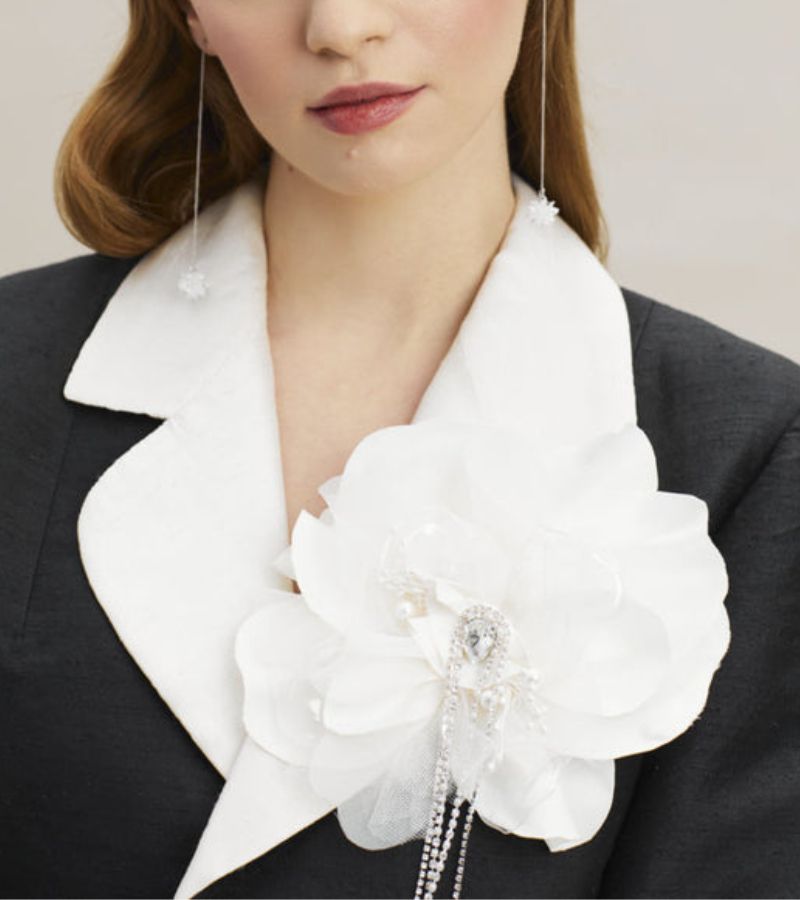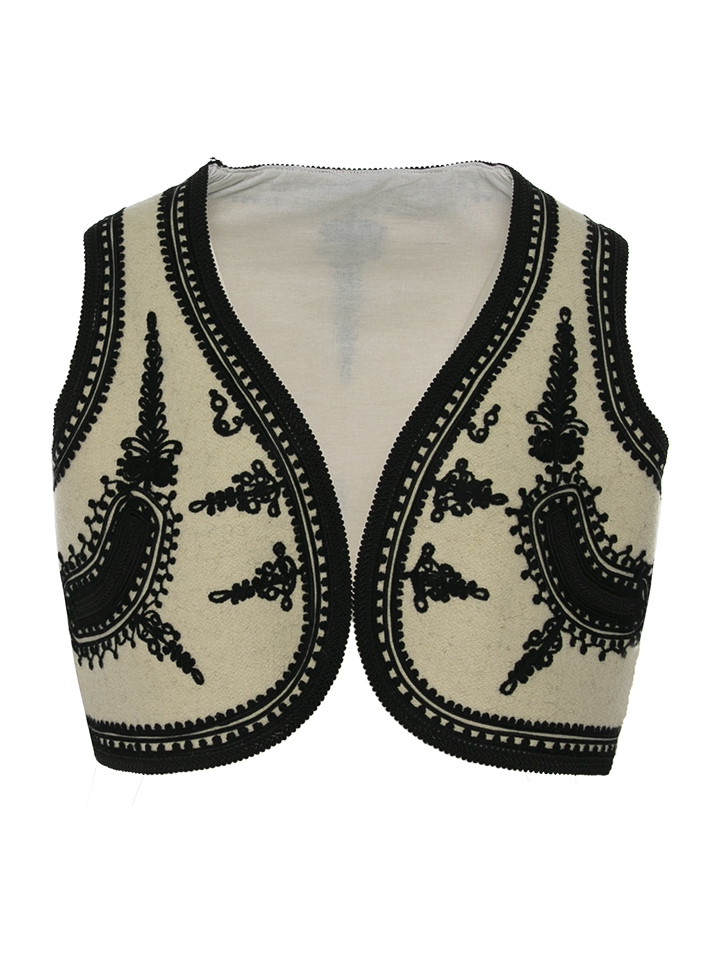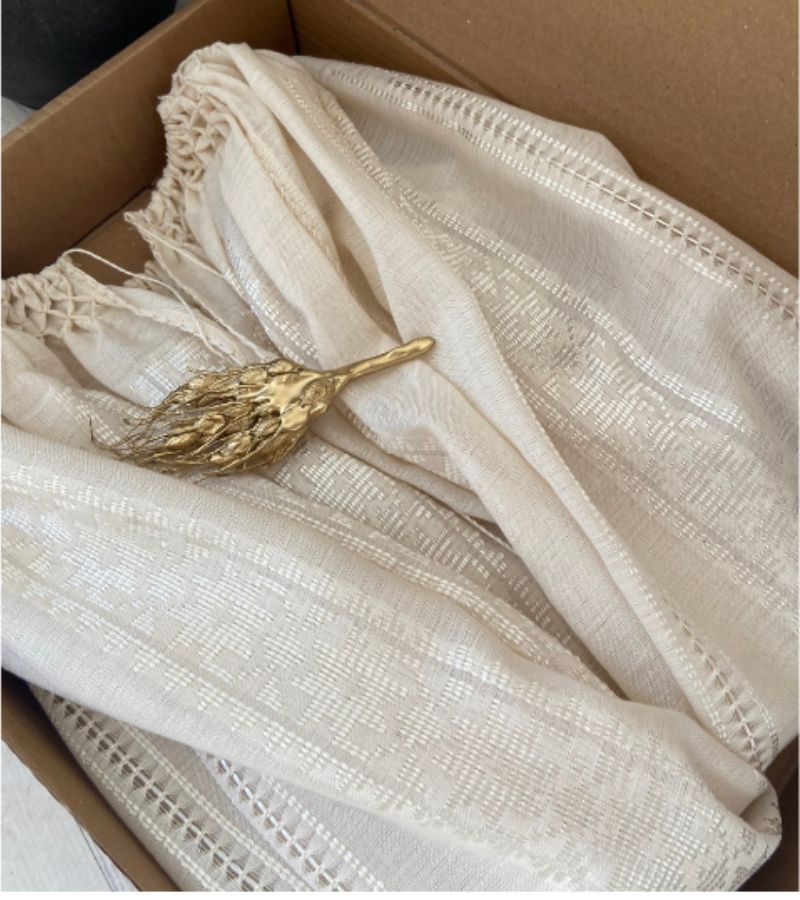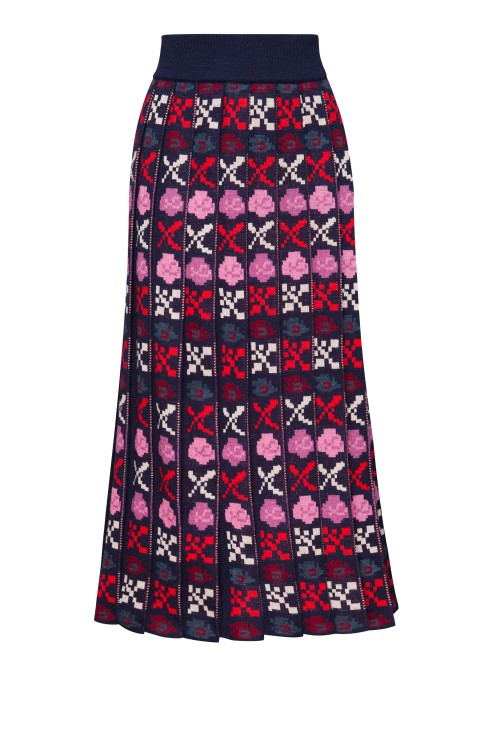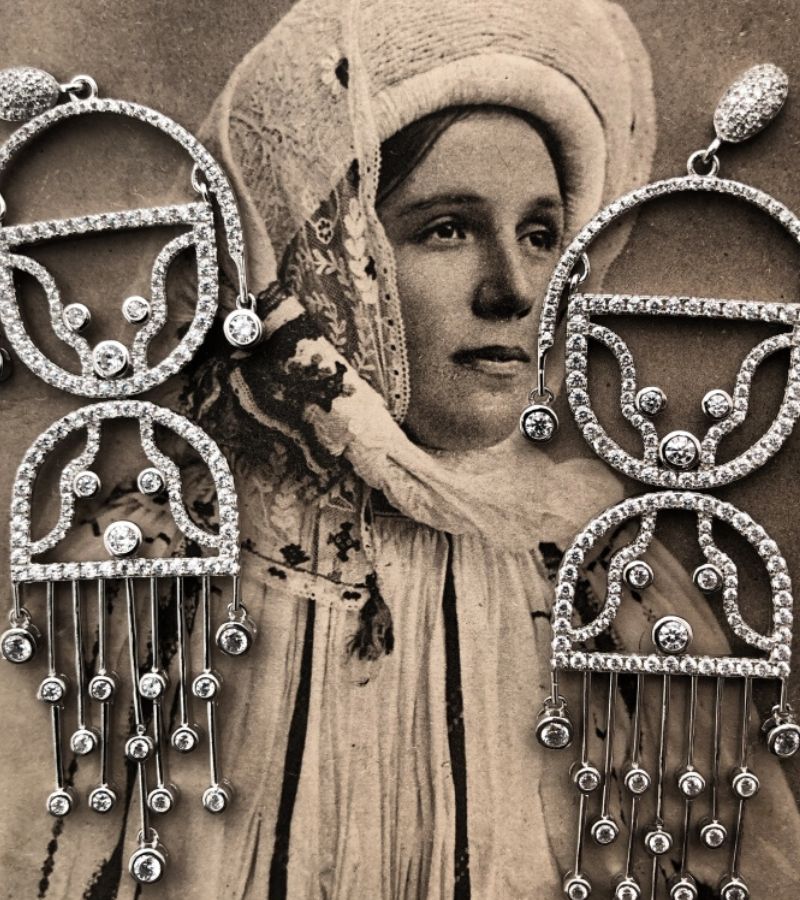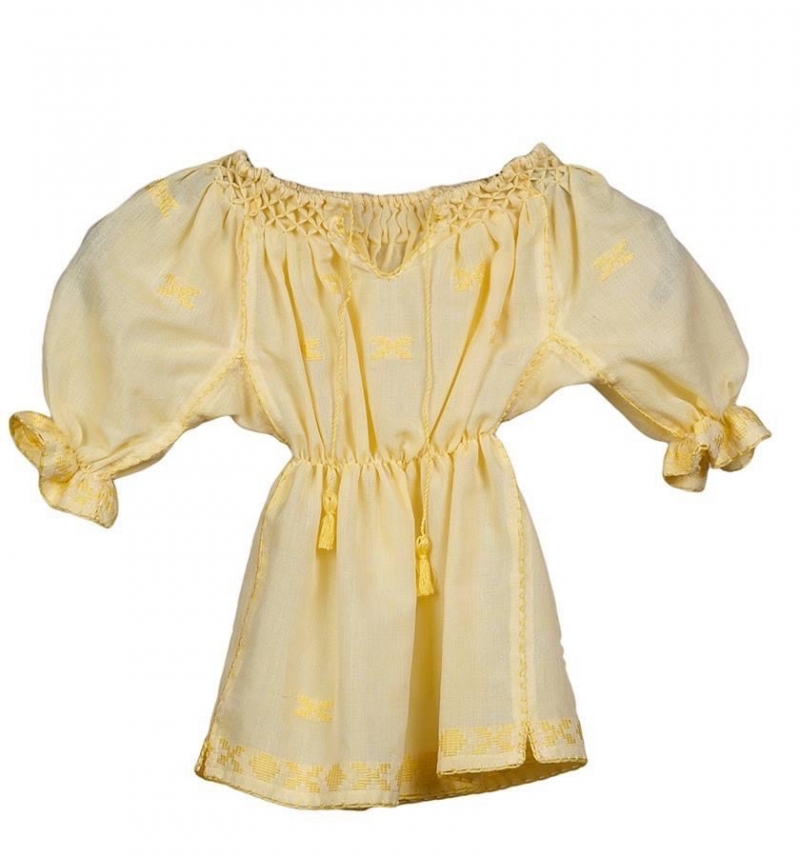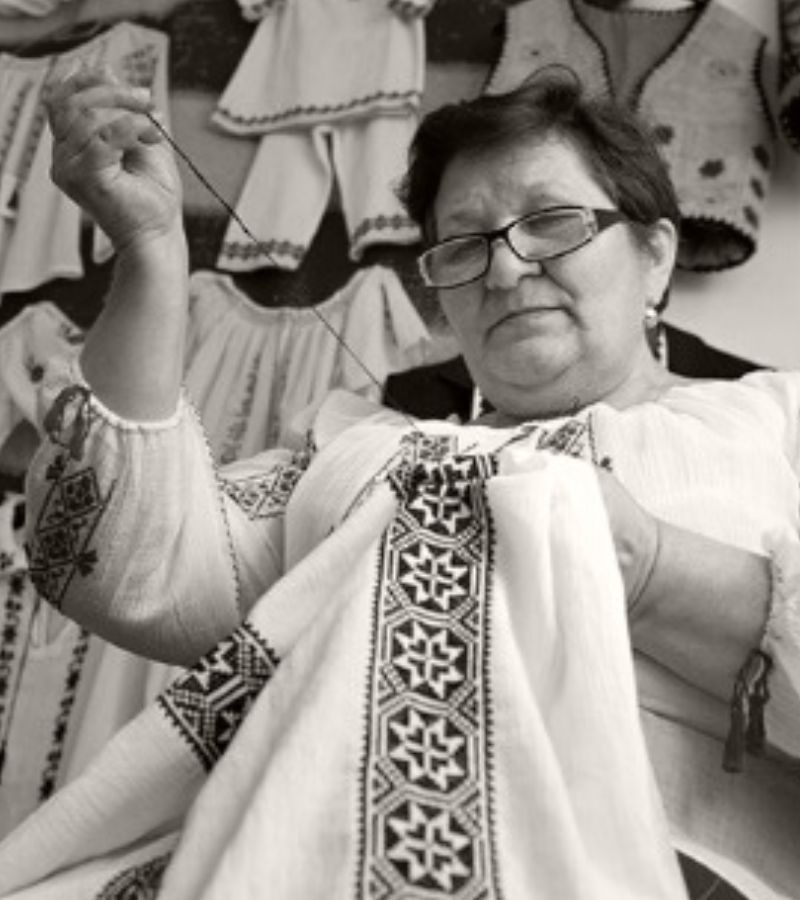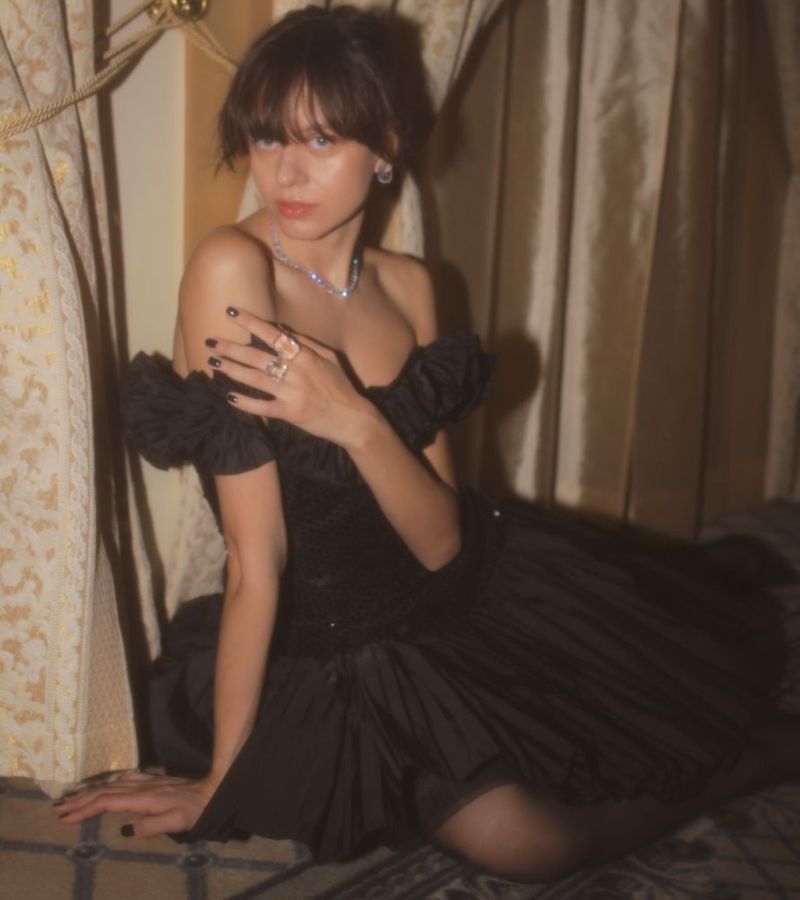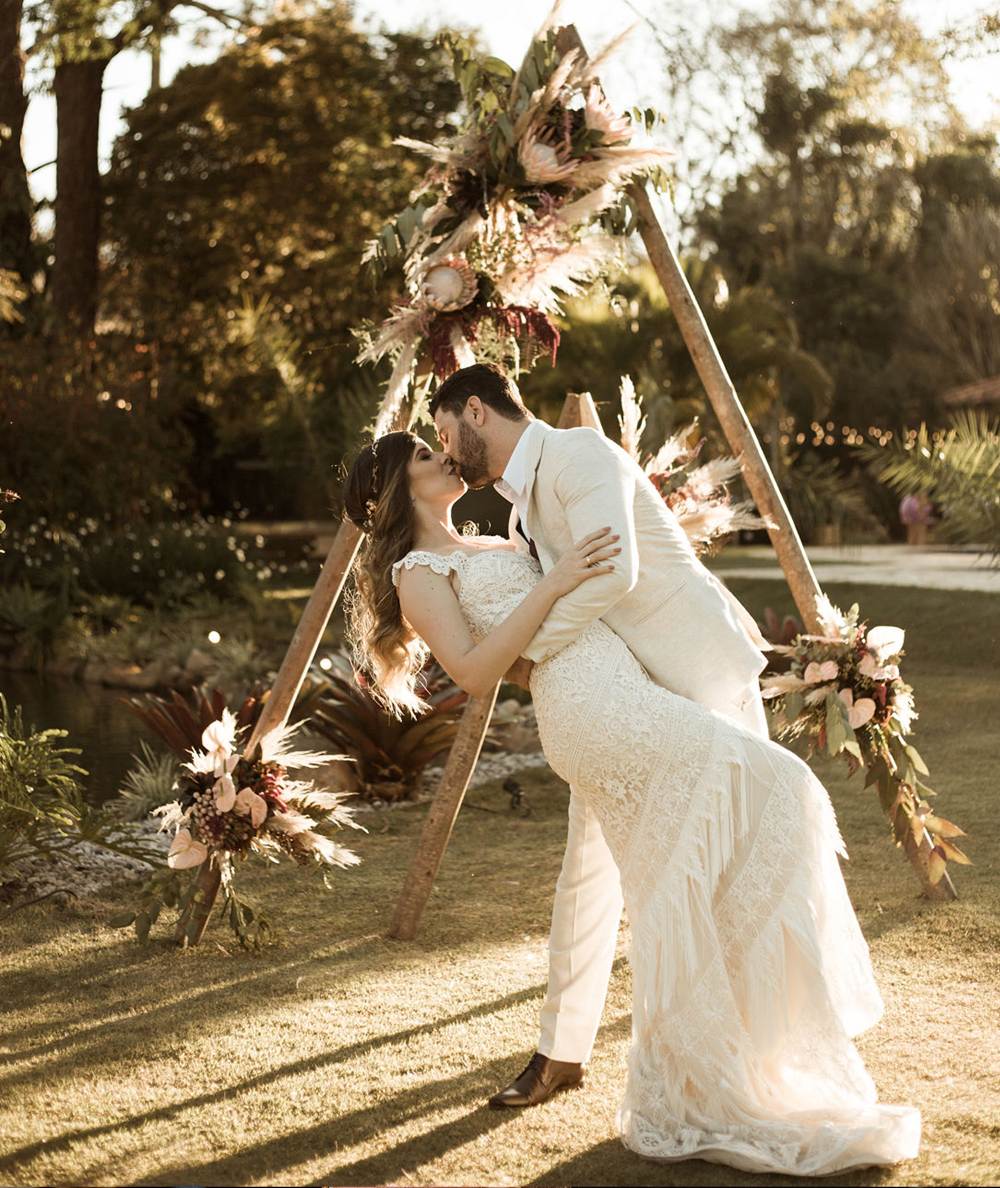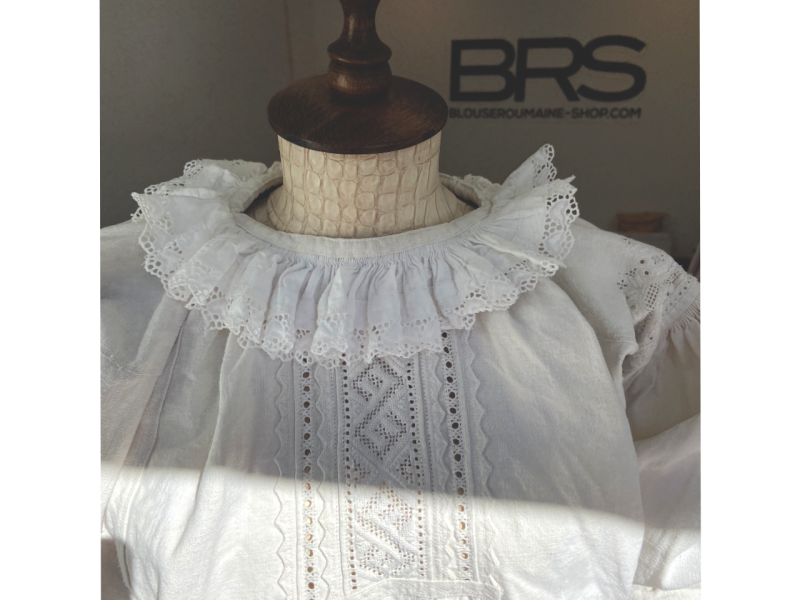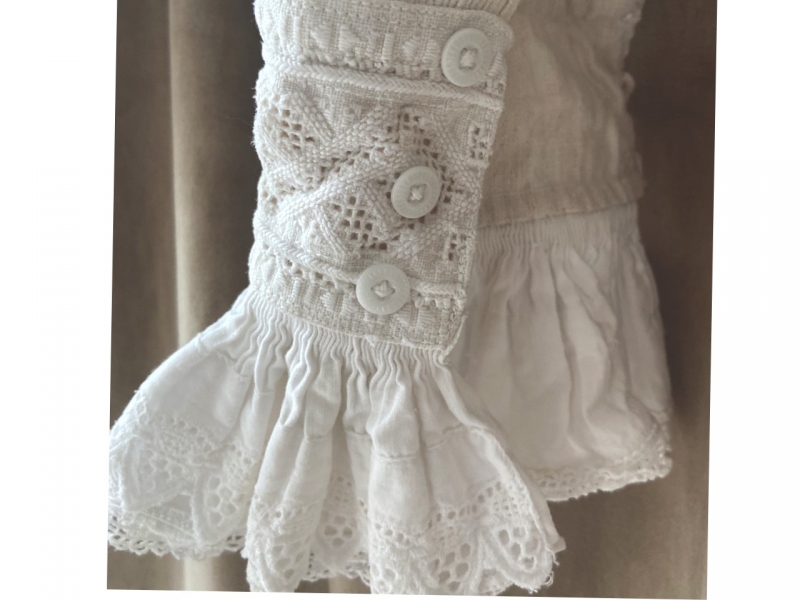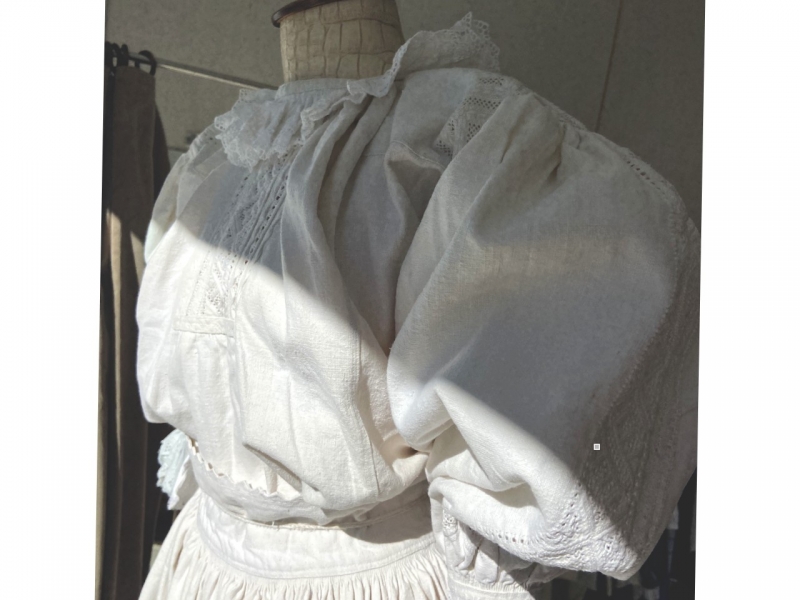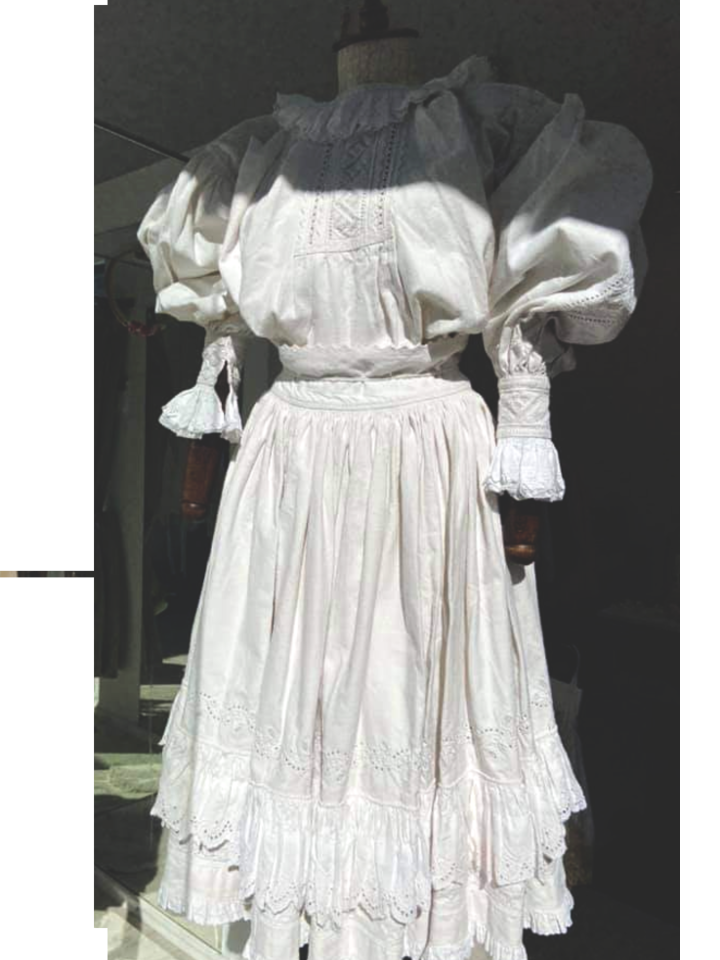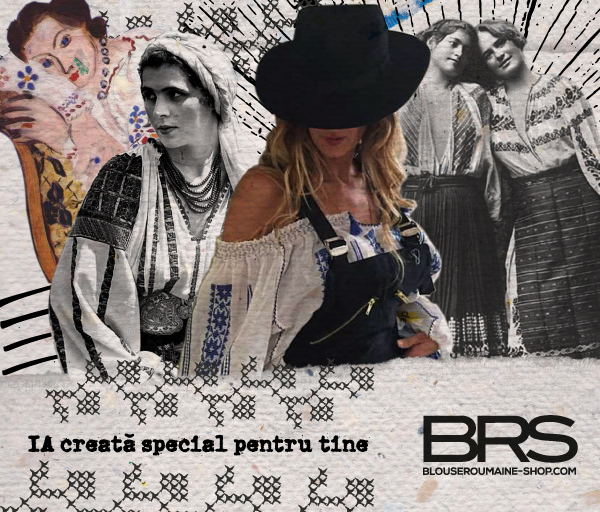- Remarkable piece, early twentieth century created in the famous weavers near Arad.
- Impeccable suit composed of traditional ie and skirt. Excellent condition.
- ie traditional
- House cloth woven in war
- Handmade cotton lace cuff embroidery
- Hand embroidery: archaic stitching, broken embroidery,
- Circumference: 120 cm
- Length; 49 cm
- Sleeves: 54 cm
- Skirt
- House cloth woven in war
- Handmade cotton lace
- 100 cm
In the villages in the area, both on Crişul Alb and north and south of Mureş, the peasants have
used in costume ornamentation, full embroidery and cutwor,/openwork embroidery. These were achieved through
certain sewing techniques, which the girls learned at home, since childhood:
- the seam drags or swears
- the seam on verbs
- the beating or the festoon
- stitching
- with savages
- The sieve
- the keys
- The seam stitch
Chronologically, the oldest type of seam in the county, used for full embroidery, was
the carriage seam, on the edges of the folds, 12 developed from the technique of the chosen one.
As a technique, work before the needle, with thread pulled, from one end of the canvas to the other. it
pick up a number of threads passing over others, following the sewn pattern. Crossings
it is performed by lifting a wire diagonally. This type of seam is applied to both tinsel and
warp.
When applied to the warp it was called a stitch.
Compared to this archaic stitch, the verb stitch is the simplest stitch
ornamental in the county.
Like the sewing carriage, it is executed both on the tinsel and on the warp. A wrap consists of three threads.
The peasants used this seam especially for contouring
models, which were to be worked through cuts: pennies, stitches, boots
botureşte), codruţii, steluţele, kinship, kinship with fangs
The crease on the neck was fastened in a narrow ribbon, on which the lining was sewn, which was either
made of chip or cloth decorated with plant motifs. The backrest was cut in front and had a
on either side applied the rods called forment. The sleeve, one and a half inches wide, was tight at the elbow
and ends in a wide ruffle, of chip or plain cloth. The ornamentation on the sleeve was
arranged either lengthwise or horizontally and consists of floral motifs (hairy), some chosen,
others sewn with white or colored thread, others with broken embroidery.
About Arad:
Placed at the interference between Bihor and Banat, having at
east Hunedoara county and west neighboring country, Hungary,
our county still preserves a beautiful material culture -
from the types of houses to the pottery of Târnăviţa - and many living traditional customs
(caroling with vans, gag, prayer and nedeia).
Traditional materials, used in the area in the manufacture of clothing, of a part of
accessories and footwear, were woven in war, wool and cow / pig / sheep skin.
Informative source: The folk costume from Arad county / Colta Elena Rodica
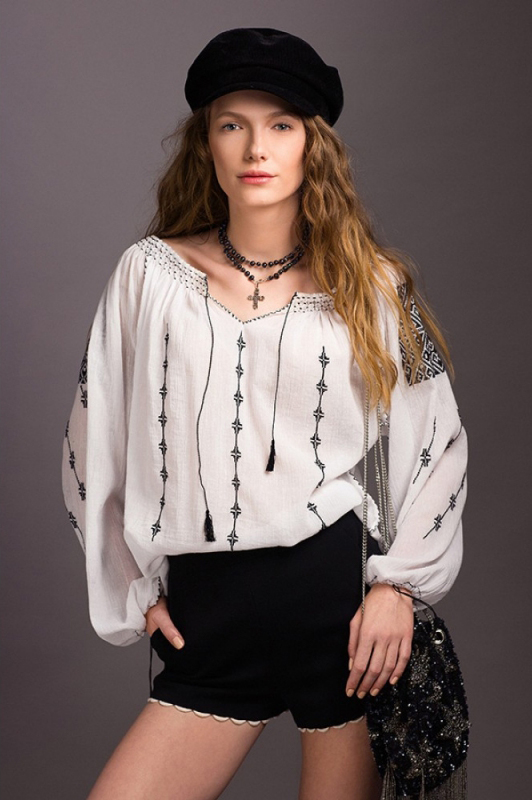

 Română
Română


